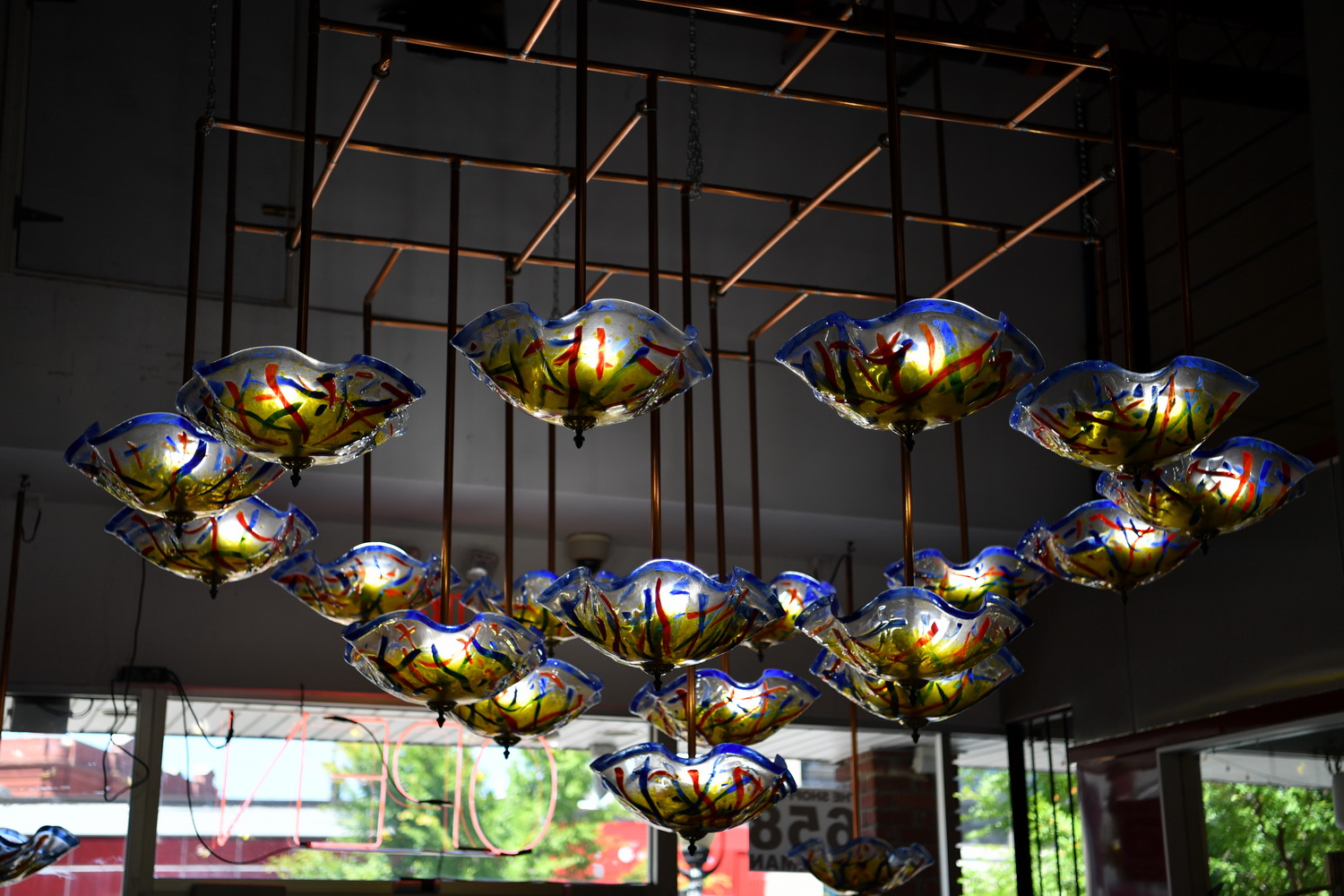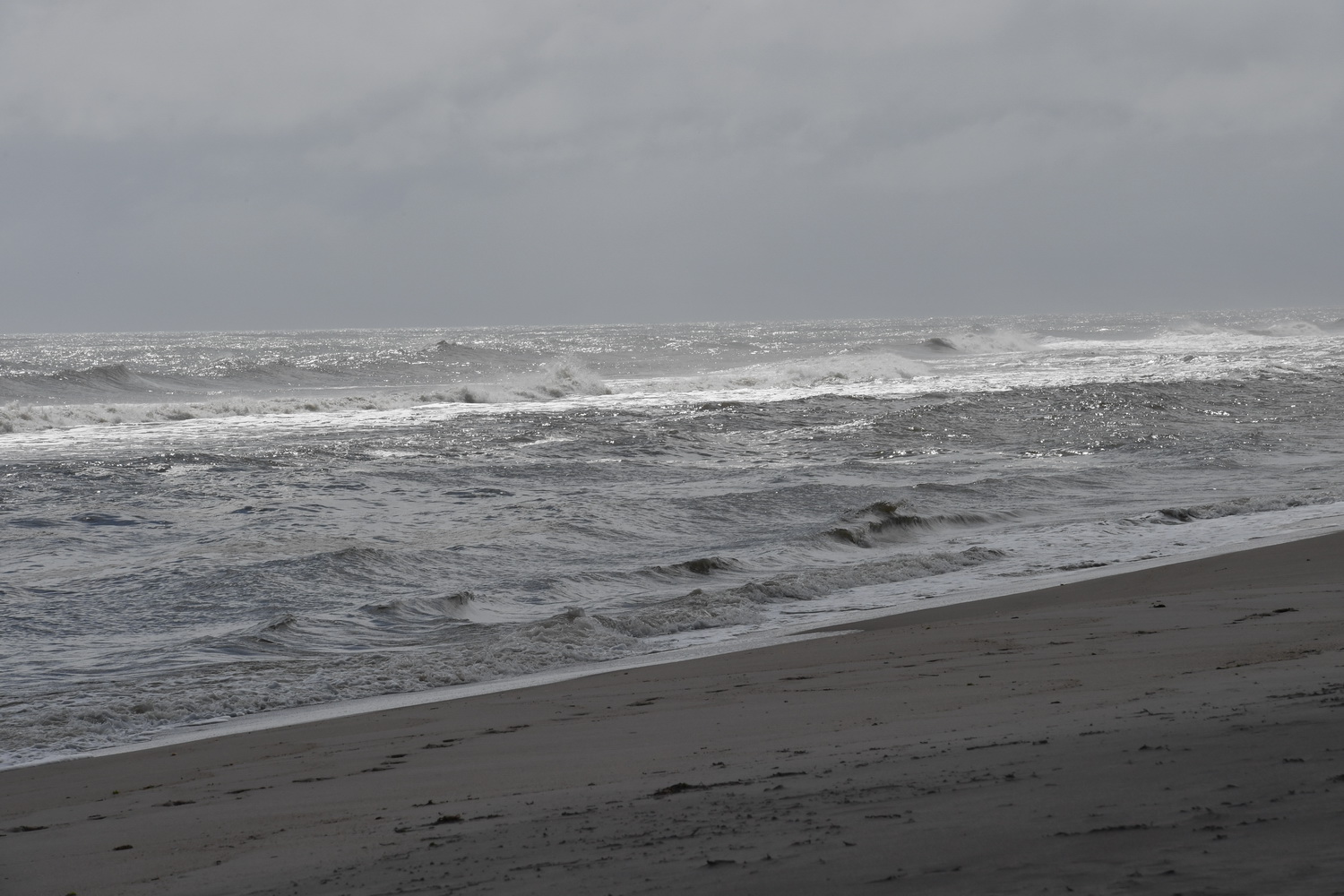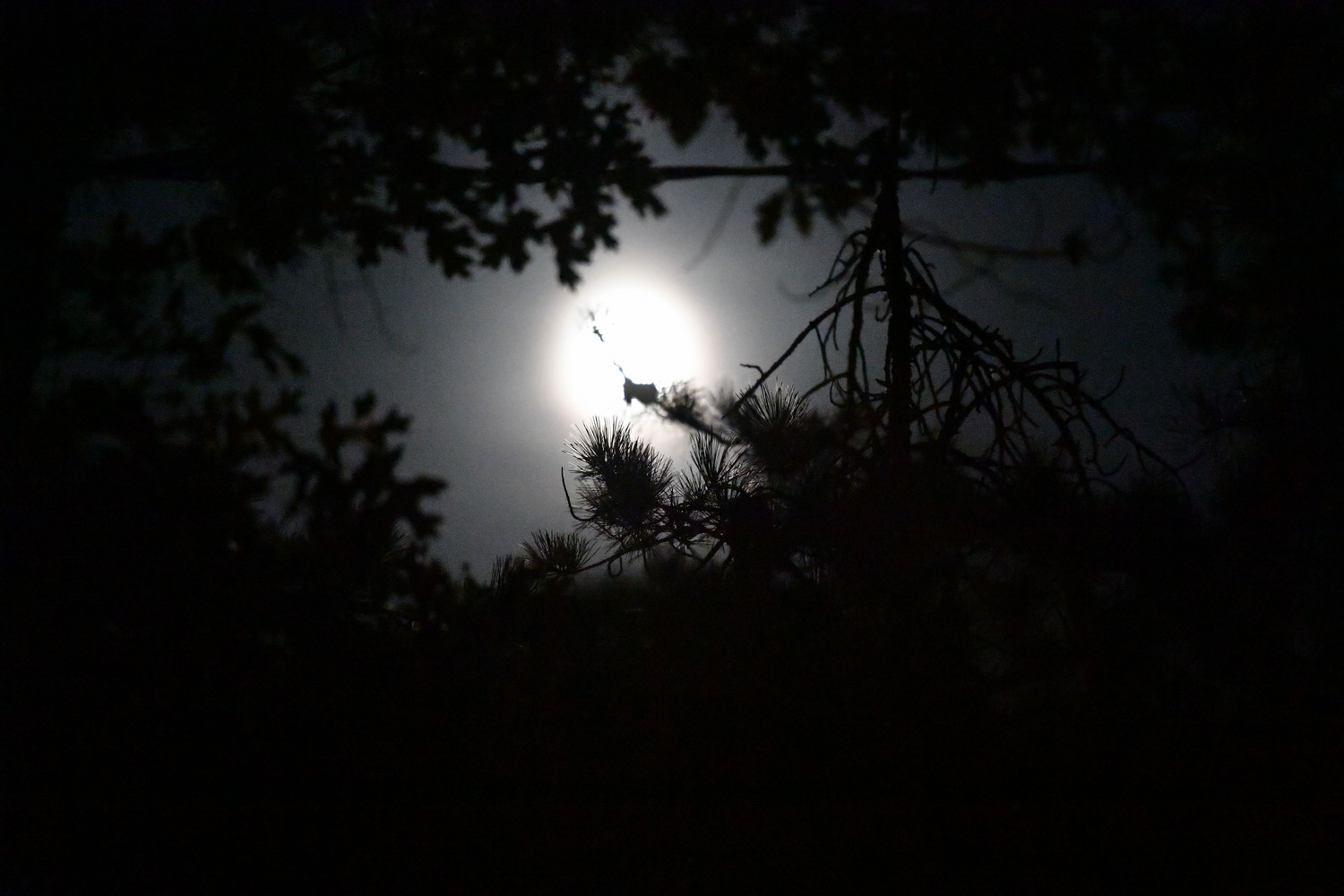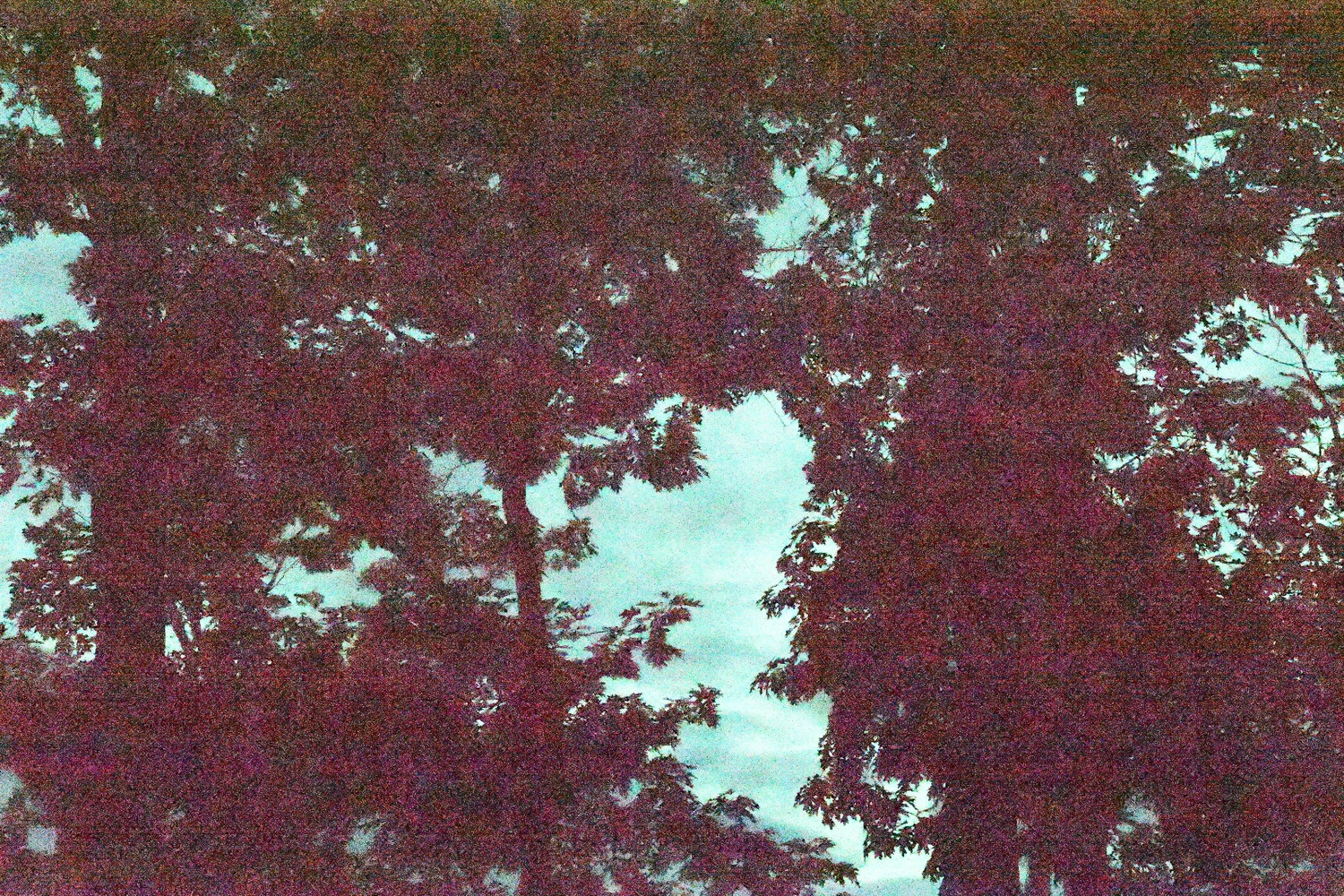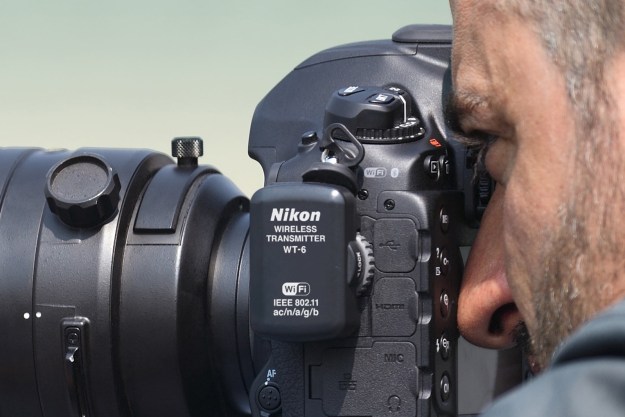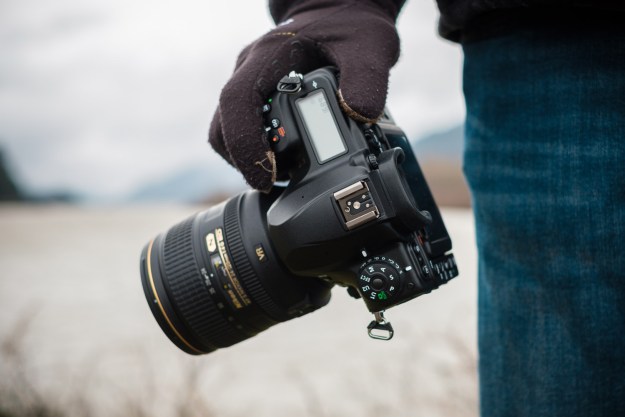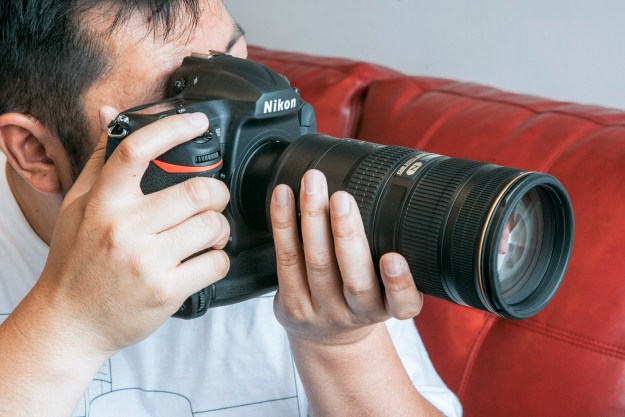
“The D5 is Nikon’s most powerful camera yet, aimed at pro shooters who need speed and the ultimate high ISO capability.”
- Extreme ISO range
- 153-point AF system
- Great image quality
- 12 FPS bursts, 200-shot buffer
- 4K video with HDMI output
- Slow Live View AF
- No built-in Wi-Fi, Bluetooth, or GPS
Canon and Nikon, the top DSLR makers, are constantly pushing the envelope with models designed to keep their pro shooters happy, such as Canon’s EOS 1D X Mark II and Nikon’s D5. Honestly, there are very few enthusiasts who would or could drop $6,000 just for a full-frame camera body, but it’s always good to test the bleeding edge tech as key new features will trickle down to more affordable cameras in the near future. In keeping with that philosophy, we were more than happy to give the new D5 after testing its APS-C sibling, the D500.
After hitting the gym to get in shape – the D5 weighs in at over three pounds, and that’s without a lens – we took Nikon’s new top-of-the-line DSLR to see what $6,500 will buy you.
Features and design
As Nikon’s highest-end camera, the D5 is often referred to as a flagship. We think “aircraft carrier” is a more apt description. The D5 is huge, measuring 6.3 x 6.3 x 3.7 inches. That makes room for the integrated vertical grip, dual XQD or CompactFlash card slots (more on this later), and massive battery that provides for 3,780 exposures (based on CIPA testing). Add lenses like the 24-70mm f/2.8 and 70-200mm f/2.8 zooms and you better be in shape before lugging this gear around.
At 3.11 pounds, the D5 is actually a bit lighter than Canon’s 1D X Mark II at 3.37 pounds, but it still takes a toll on your body after a day of shooting. While some intrepid photojournalists will undoubtedly carry a D5 kit on assignment, you are more likely to find this camera atop a monopod or tripod on the sidelines of a major sporting event or in a professional studio.
For anyone who hasn’t used this style of DSLR before, the massive, all-black Nikon looks formidable. But once you get past the first impression, it’s still a DSLR, one that’s nicely set up with all the important controls at the ready. Needless to say, you can pick it up and start shooting like any digital camera, but its capabilities go far beyond that, so a walk through the owner’s manual makes sense.
One of the most outstanding features of the D5 is the 153-point autofocus system.
One of the most outstanding features of the D5 is its 153-point autofocus system, up from 51 in the D4S. Of those points, 99 are cross-type, being sensitive to both vertical and horizontal lines, which should improve focusing speed on a variety of subjects. No other non-Nikon DSLR comes close to this. It’s so accurate that basically anything you frame will be captured sharply and crisply. To get an idea of what this system can do, check out our review of the $2,000 Nikon D500 – our pick for best camera of 2016 – which uses the same AF system.
The D5 serves up a healthy amount of options when it comes to choosing AF modes. From single-point, single-shot AF to advanced continuous AF with 3D tracking, the camera can be fine-tuned for everything from still-life shots to high-speed sports photography. We were happy shooting in the 153-point Group AF setting and left it in that position throughout most of our testing.
The control layout will be familiar to users of Nikon’s previous single-digit D cameras, but some things have changed. The control cluster on the top left now houses the Mode, Bracket, and Metering keys. The dial immediately below lets you change shooting mode and is where you’ll find Continuous High (CH) mode to unlock the maximum 12 frames per second (FPS) burst shooting. Near the shutter button on the right are controls for movie recording, exposure compensation, and ISO (which has been moved to that position to make it easier to access while looking through the viewfinder). Like the D4S, the controls on the back of the camera can be illuminated for easy visibility at night or in low-light settings.
Part of the D5’s bulk is due to the large optical viewfinder and a fixed touch-enabled 3.2-inch LCD screen. The LCD features 2,359,000 dots – about as good as it currently gets – and is the first touchscreen on a Nikon flagship camera. Touch functionality is limited to image playback, but it works quite well here.
Another first for Nikon, the D5 is available in two separate configurations: with two XQD or two CompactFlash card slots. The D4s put one XQD and one CF together, but the D5 forces users to pick a format. Anyone looking to maximize performance should go all-in on XQD, as this newer format is significantly faster than the aging CF. We tested the XQD model and never experienced any delays or other issues writing to the card for stills or videos.
When it comes to downloading files off those cards, the D5 also boasts a USB 3 port for fast image transfers. Studio shooters will be happy to find that the D5 also has a built-in Ethernet port, which now supports gigabit speeds.
One thing lacking is built-in Wi-Fi and Bluetooth. While the D500 introduced Bluetooth Low Energy for automated file transfers to a mobile device, the D5 has no way to wirelessly send files unless users purchase the $750 WT-6A transmitter. That the D5 lacks Wi-Fi is par for the course when it comes to flagship DSLRs (Canon’s 1D X Mark II also goes without), but we can’t help but feel that this is an unfortunate oversight. Perhaps most pros don’t need it, but charging $750 for an accessory to add a feature that is found on cameras costing less than that is borderline ridiculous.
What’s included
Nikon supplies the body, an EN-EL1a battery, and a charger that can handle two of these humongous batteries. You also get a USB and HDMI cable, various caps, and an eyepiece adapter. Software and manuals are available for download from the Nikon site, including ViewNX-i and Capture NX-D for handling files.
Specs, performance, and use
The D5 is built around an all-new, 20.8-megapixel full-frame sensor (Nikon calls it FX) powered by the Expeed 5 processor. Although it may not have the most megapixels in a full-frame sensor, its expanded ISO range hits an astounding maximum of 3,280,000. Our results with it were really bad at the high end, but we imagine Federal agents on stakeouts will appreciate it. The native ISO is a more reasonable 100-102,400 so you can be rest assured that with a wide-aperture lens, you’d get superior low-light images.
The D5’s 12 FPS continuous shooting can be bumped to 14 with the mirror held up and AF and exposure locked. Bursts can be sustained for up to 200 shots when using XQD cards, so sports photographers have plenty of room to work with. Combined with the drastically improved AF system and higher resolution sensor, this is a major leap in performance over the D4S (that camera had just 16.2MP with a top burst setting of 11 FPS). Other specs of note include a top shutter speed of 1/8,000 second and enhanced 4K UHD versus the 1080/60p of the D4S. The D5 is clearly a major upgrade to Nikon’s pro lineup and working shutterbugs will appreciate the improvements.
We had the D5 and two f/2.8 zoom lenses (AF-S Nikkor 70-200mm f/2.8G ED V and AF-S Nikkor 24-70mm f/2.8E ED VR), which cost about two grand each. Altogether, our hefty kit was worth a cool $10,000. We don’t have to keep you hanging: The D5 is an excellent DSLR, one of the best we’ve ever shot. And let’s be serious: If you’re spending over $6,000 for a camera, it had better be outstanding – and the D5 certainly is.
When we reviewed the Nikon D500, we had many high-speed subjects readily available to photograph, including polo players. We grabbed so many keepers it was hard to narrow down the samples to show. This was thanks to the fact the D500 has the same outstanding autofocus system as the D5. One thing worth mentioning is that because the D500 has a crop factor of 1.5x, the AF points nearly fill the entire frame. The larger format of the D5 means the AF points are limited to a central region of the frame. The system therefore doesn’t provide the same amount of coverage on the D5, but it does offer finer control within the area of coverage.
For high ISO shooting, the D5 ranks among the best cameras on the market.
Unfortunately, we didn’t have speedy horses on this go-round, just a lot of static images with an occasional seagull on the wing. This didn’t bother us in the slightest as the photos we did capture were outstanding, with beautiful, rich colors and sharpness that gets more impressive as you enlarge the file on your monitor. You won’t get the extreme resolution and dynamic range of the 36MP Nikon D810, but at high ISO settings, the D5 ranks among the best cameras on the market, with perhaps only the lower-resolution Sony A7S and A7S II giving it a run for its money.
We stuck with the 24-70mm throughout most of our testing. The $1,800 midrange zoom is a true workhorse lens, and the f/2.8 aperture is great for producing a blurry background. We used the 70-200mm telephoto less often, but it came in handy when we were on the beach shooting the rough surf after Hurricane Hermine. It’s important to note that to maximize the abilities of a camera like the D5, it really helps to have lenses like these – but you also need to account for the cost of such lenses.
It was noted earlier that the D5 has a maximum ISO setting of 3,280,000 (denoted as H5). Unless you’re an undercover agent trailing shady characters at night, this number is meaningless. However, in our tests the camera maintained quality images without significant noise or color shifts until well over ISO 102,400, although noise will obviously be more noticeable the less available light there is.
Video
There’s no question that as a still photo capture device, the D5 is hard to beat. However, when it comes to video, the DSLR is not a slam-dunk. Focusing is very problematic as it relies on a simple contrast detection system. According to the Nikon experts we’ve worked with, manual focus is the way to go when shooting video. Also, when recording in Live View, the screen suffers from serious reflectivity issues. Of course, we were in the worst location for this: a bright beach in direct sunlight.
There is also the issue of simply using such a large, heavy camera for shooting video. If you want to keep your shots smooth at all, you’re really going to want a heavy-duty monopod or tripod. Pros may want to expand their rigs even further, as the D5 offers clean HDMI output in 4K, suitable for high-quality external recording – something not even Canon’s 1D X Mark II can do.
That said, for less cumbersome setups, Canon still has the lead here. Shooting 4K on the D5 crops the sensor by a factor of 1.5, whereas the Canon crops by only 1.34. Canon’s Dual Pixel AF tech also makes live view autofocusing a breeze. Editing is also a bit more user friendly on the 1D X Mark II; while both cameras can shoot up to 30 minutes, the D5 breaks videos into as many as eight separate clips – starting a new file every 4GB as necessitated by the FAT32 file format it uses.
Warranty information
Nikon offers a one-year warranty for parts and labor.
Our Take
Nikon has given professional shooters another outstanding camera with the D5. It is faster and sharper than its predecessors, with an autofocus system that actually enables users to take advantage of that speed and resolution. We would have liked to see a bit more effort put into the video mode, but ultimately this a camera for still photographers first, and the pros who pick it up for sports and action photography will not regret it.
Is there a better alternative?
The closest competitor to the D5 is Canon’s EOS-1D X Mark II. Both cameras offer stellar performance and image quality, and each takes a lead in different areas. There’s probably no real reason for a user of one brand to risk switching to the other at this point in time. However, current Nikon shooters still have a difficult choice due to the D500.
We loved the D500 and would urge anyone looking to up his or her photographic game to check it out. Although it uses a cropped (DX) sensor, picture quality is outstanding. While it can’t match the low-light capabilities or shooting speed of the D5, you do get the same industry-leading autofocus system and a respectable 10 FPS burst mode. You can build out a D500 with a vertical battery grip and a lens or two and still come in short of the cost of a D5.
How long will it last?
The D5 is built like a tank and is fully weather sealed against dust and moisture. The shutter is rated for an impressive 400,000 cycles. This is a machine built to work in harsh conditions, so we expect it will last quite some time. Depending on how you use it, that could be many years, but some pros may churn through those 400,000 shutter actuations well before that.
Should you buy it?
Chances are, you already know whether or not you’re the type of photographer who needs this camera. Buying the D5 is a fairly simple decision for a working professional with a library of Nikon glass. If they have the clients and the budget, why not?
As for enthusiasts, spending $6,500 on the D5 doesn’t make much sense, especially when the D500 shares most of its capabilities and is $4,500 cheaper.
Editors' Recommendations
- The best full-frame cameras
- Smaller and cheaper, the full-frame Lumix S5 is exactly what Panasonic needed
- The Nikon Z 5 doubles down on SD card slots despite its entry-level price
- The Nikon D6 camera is finally arriving on May 21
- Nikon D750 vs. D780: 5 years in the making, Nikon’s newest proves its worth




